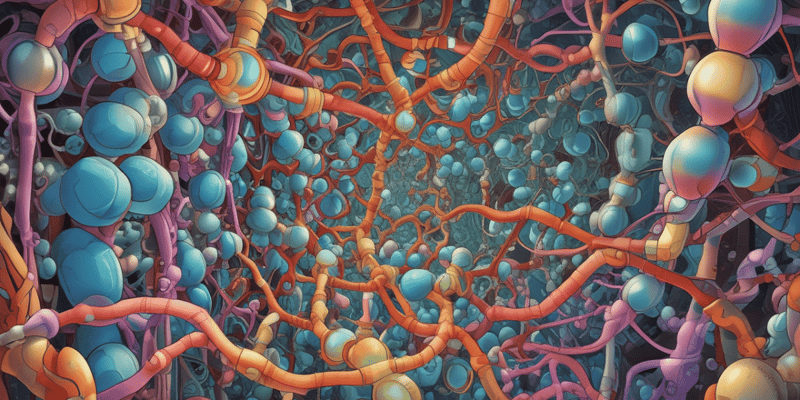14 Questions
What is the role of ATP in energy coupling and transfer?
Storing and transferring free energy
What is the branch of biochemistry that focuses on how cells transform energy?
Bioenergetics
Which molecule is known as the reducing agent in redox reactions?
Magnesium
What is the central role of redox reactions in the metabolism of a cell?
Transferring electrons
What is the atom or molecule that accepts electrons in redox reactions known as?
Oxidizing agent
What do bioenergetic processes such as cellular respiration or photosynthesis contribute to?
Cellular metabolism
What is the primary function of ATP in living cells?
To drive metabolic reactions that would not occur automatically
What is the analogy used to describe the function of ATP?
A rechargeable battery
Which molecule is formed when a second phosphate group is added to AMP?
ADP
What type of bond links the phosphates in ATP?
Phosphoanhydride bond
What process releases energy by removing one or two phosphate groups from ATP?
Hydrolysis
In what way does ATP alter the structure of the integral protein in the sodium-potassium pump?
It changes its affinity for sodium and potassium
What is the main reason for adding a phosphate group to a molecule?
To supply energy for cellular processes
What is continuously regenerated from ADP in living cells?
$P_i$ (inorganic phosphate ion)
Study Notes
Energy Coupling and Transfer
- ATP (Adenosine Triphosphate) plays a crucial role in energy coupling and transfer, serving as the primary energy currency of the cell.
- ATP is responsible for transferring energy from one location to another within the cell.
Biochemistry Branch
- Bioenergetics is the branch of biochemistry that focuses on how cells transform energy.
Redox Reactions
- NADH (Nicotinamide Adenine Dinucleotide) is known as the reducing agent in redox reactions.
- Redox reactions play a central role in the metabolism of a cell, facilitating the transfer of electrons and energy.
- The atom or molecule that accepts electrons in redox reactions is known as the oxidizing agent.
Bioenergetic Processes
- Bioenergetic processes such as cellular respiration or photosynthesis contribute to the production of ATP.
ATP Function
- The primary function of ATP in living cells is to provide energy for various cellular processes.
- The analogy used to describe the function of ATP is that of a rechargeable battery, which can be replenished and reused.
ATP Structure
- When a second phosphate group is added to AMP (Adenosine Monophosphate), ADP (Adenosine Diphosphate) is formed.
- The phosphates in ATP are linked by high-energy phosphate bonds.
Energy Release
- The process of releasing energy by removing one or two phosphate groups from ATP is known as ATP hydrolysis.
Sodium-Potassium Pump
- ATP alters the structure of the integral protein in the sodium-potassium pump, enabling the transport of ions across the cell membrane.
Phosphate Group Addition
- The main reason for adding a phosphate group to a molecule is to increase its energy potential.
ATP Regeneration
- ATP is continuously regenerated from ADP in living cells, ensuring a constant supply of energy for cellular processes.
Test your knowledge on the role of ATP in energy coupling and transfer, as well as the processes of storing and transferring free energy in cells. This quiz also covers redox reactions and their significance in cellular metabolism.
Make Your Own Quizzes and Flashcards
Convert your notes into interactive study material.
Get started for free




